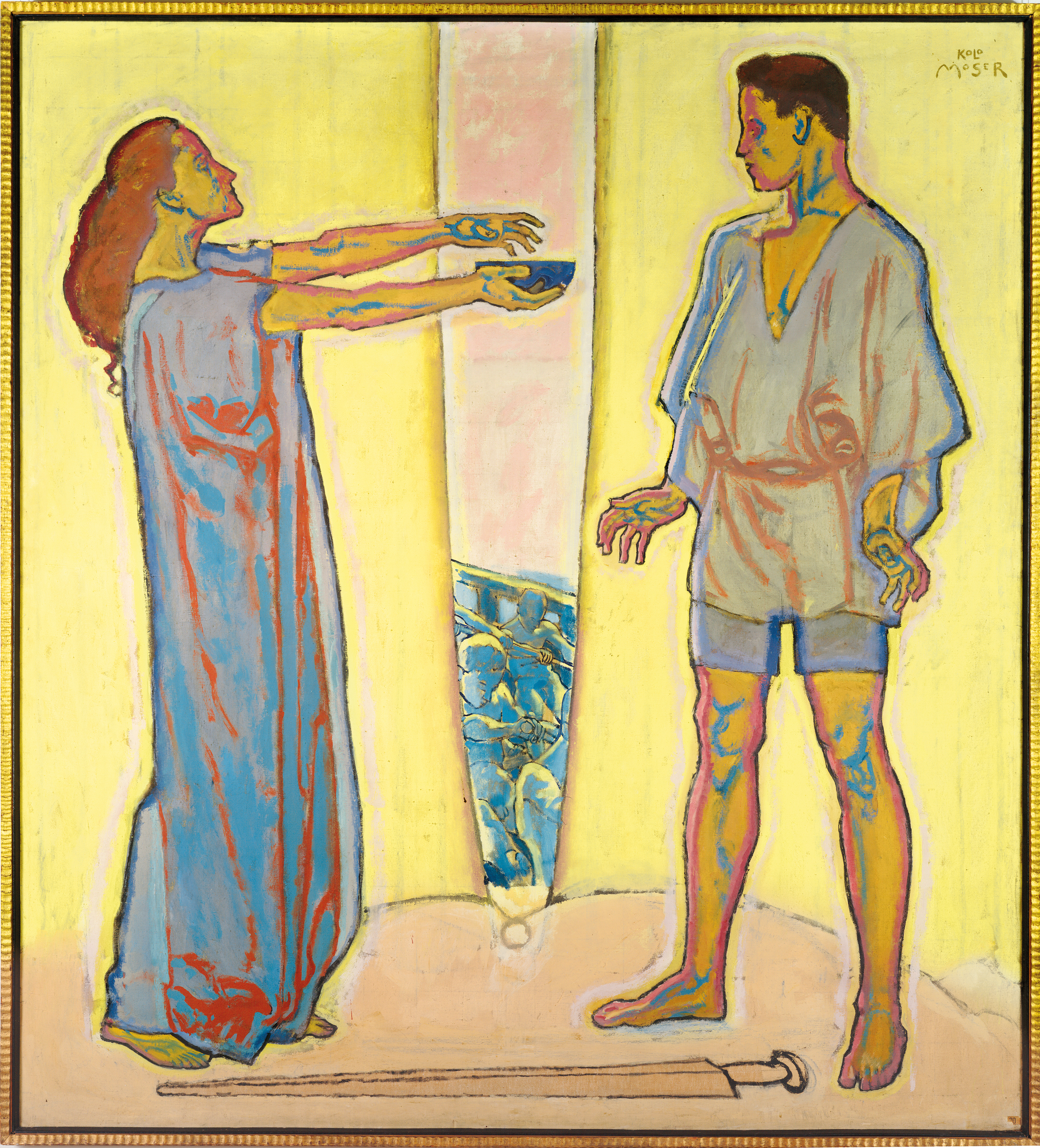The opera Tristan and Isolde by Richard Wagner describes the sinister love between the hero Tristan and the Irish princess Isolde. Tristan killed Isolde's fiancé in the battle between Cornwall and Ireland and sent her his head. Mortally wounded in battle, Tristan was nursed back to health by Isolde, who did not recognize him.
The King of Cornwall once again sent his faithful companion Tristan back to Ireland to court Isolde as his wife and pledge peace. Deeply hurt that her future husband chooses none other than Tristan for this task, she plans to take revenge for the death of her fiancé. She summons Tristan to supposedly free himself of his guilt by drinking, what she says, is a potion of atonement. But instead both drink from the love potion and immediately burn in deep love for each other—the disaster takes its course.
Kolo Moser shows us the most dramatic moment of the opera - the confrontation of an evocative Isolde, seeking revenge, with a surprised Tristan. The hero has not yet managed to accept the potion, nor could the approaching disaster be averted. The tension between the figures, the oarsmen in the middle, who push themselves in the background like a wedge between the two protagonists, and the unrealistic colorfulness are the finesse of this strict, symmetrical composition. Moser's monumentality is clearly influenced by Ferdinand Hodler's painting. As exhibition curator of the Secession, Moser had already supervised an exhibition with Hodler in 1904; in his late work he paid tribute to him once again.
We continue our special month with Leopold Museum, where now you can visit its newly conceived presentation of the collection: Vienna 1900. We highly encourage you to do so. ; )
If you want to more know and see the art by Ferdinand Hodler, click here.


 Koloman Moser
Koloman Moser